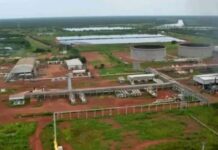Author| Hon. Malek Cook
Dredging is an essential process that helps keep navigable waterways, harbors, and ports clear by removing sediment that builds up over time. This sediment can block navigation channels, making it necessary to regularly dredge these areas to ensure safe passage for vessels.
Dredging is not only crucial for maritime activities but also plays a significant role in ensuring water security. Water security is the ability of a population to maintain sustainable access to sufficient quantities of acceptable quality water for livelihoods, human well-being, and socio-economic development. Dredging supports water security in several important ways:
Maintaining Navigation Channels: Regular dredging keeps shipping lanes open and navigable, which is vital for trade and transportation. For example, the Port of New York and New Jersey manages around two million loaded containers each year, significantly boosting the economy while depending on effective dredging practices (EPA). Preventing Flooding:
When sediment accumulates, it can reduce the water flow capacity in rivers and lakes, increasing the risk of flooding during heavy rains or snowmelt. By removing excess sediment through dredging, waterways can better handle stormwater runoff and lower flood risks. Enhancing Water Quality:
Dredged materials often contain pollutants that can harm water quality if not addressed. Proper management of these materials through testing and disposal methods helps reduce contamination risks in aquatic ecosystems (EPA). This is especially crucial in urban areas where sediments may be tainted with industrial pollutants. Restoration of Ecosystems:
Dredging can also serve as a tool for ecological restoration. By removing invasive species or restoring natural habitats that have been filled with sediment, dredging can enhance biodiversity and improve ecosystem health (U.S. Army Corps of Engineers).
The process of dredging is regulated by a variety of laws and guidelines designed to safeguard human health and the environment: Environmental Protection Agency (EPA): The EPA is responsible for overseeing environmental impact assessments that must be completed before any dredged materials can be disposed of. This includes making sure that disposal methods do not negatively affect aquatic life or water quality. U.S. Army Corps of Engineers (USACE):
The USACE works alongside the EPA to assess different disposal options for dredged materials, ensuring adherence to federal regulations under laws such as the Marine Protection, Research, and Sanctuaries Act.
These regulatory frameworks are essential for preserving both water security and environmental health during dredging activities. Innovative Approaches in Dredged Material Management Recent technological advancements have transformed the management of dredged materials:
Decontamination Techniques: New methods enable the treatment of contaminated sediments, allowing them to be repurposed into construction materials like bricks or cement (EPA). This approach not only minimizes waste but also fosters sustainability through material recycling. Alternative Disposal Methods: By examining various disposal options—such as open-water versus upland disposal—decision-makers can select the most environmentally responsible choices (USACE).
These innovative strategies play a crucial role in enhancing water security while reducing the environmental impacts typically associated with traditional dredging methods.
Conclusion In conclusion, dredging is essential for ensuring water security by keeping waterways navigable, preventing flooding, improving water quality, and aiding in ecosystem restoration efforts. The regulatory frameworks set by agencies like the EPA and USACE ensure that these activities are carried out responsibly while encouraging innovative management practices for dredged materials.
Author| Hon. Malek Cook-Dwach, MP at TNLA and PhD Candidate, University of Juba, Malekcook75@gmail.com





